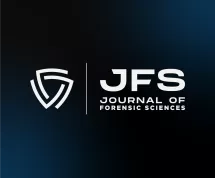Search
Explore content from JFS, ASB, the AAFS Newsfeed, and other content using the search bar or filters.
Forensic Anthropology: Terms and Definitions

Standard for Scene Response: Initial Response by Scene Investigators

Standard for Reports and Testimony inForensic Toxicology

Standard for the Documentation and Processing of Shooting Scenes

Best Practice Recommendation for Determining What Scene and Death Locations a Medicolegal...

Best Practice Recommendations for Internal Validation of Human Short Tandem Repeat...

Standard for Internal Validation of Human Short Tandem Repeat Profiling on Capillary...

Standard for Familial DNA Searching

ASB Newsletter – July 11, 2025

Submit Your Abstract for Presentation at Last Word Society
YFSF Seeking Speakers for 2026 Session
Call for Nominations: Criminalistics Section Awards
2026 ABFO Workshops
Abstract Submission Deadline Reminder
An alternate method for casting of three‐dimensional footwear imprints in snow and sand
Great Stuff™ is presented as an alternative material for the casting and preservation of three‐dimensional footwear impressions located in snow and sand. This method generates a detailed, 1:1 foam cast of questioned footwear imprints. Great Stuff™ is a readily available commercia...
Quality issue management and disclosure in forensic science: A survey of practice and...
Addressing calls for transparency regarding errors and limitations in forensic processes is an ongoing concern for the forensic science service provider community and the stakeholders it serves worldwide. Foundational to this goal is developing a consistent approach to the identi...
Method for estimating real‐scale 3D human body shape from an image based on 3D camera...
The combination of computer vision (CV) and computer graphics (CG) is being developed for use in many fields. Consequently, reverse projection photogrammetry, which identifies geometric properties of a subject based on accurate reproduction of the image content, is beginning to r...